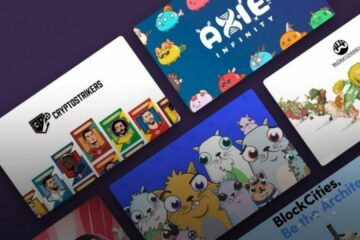Non-fungible tokens (NFTs) are currently stirring up the art market and are one of the most important trends in the blockchain world – but what role do digital evidence play for companies and other organizations? Learn more about the uses and challenges of NFTs for business.
The hype is real
It was clear by March 11, 2021 at the latest that NFTs have the potential to permanently shake the art market. On that day, the artist Mike Winkelmann, better known as Beeple, sold a digital collage at Christie’s auction house for $ 69 million. For comparison: By October 2020, the maximum price that Winkelmann had achieved for one of his paintings was $ 100. [2]
The example shows how rapidly the development of NFTs has been in the past few months. In the first quarter of 2021 alone, the total volume of NFT sales was more than $ 2 billion – that’s an 800% year-over-year increase.
The use of NFTs is no longer limited to digital paintings. Songs, tweets or lines of code are also traded as NFTs and sell for millions at auctions.
What are NFTs and how do they work?
From a technical point of view, NFTs are cryptographic tokens on a blockchain that contain unique ownership information that cannot be copied or changed in the form of a stored character string.
In contrast to fungible tokens, such as Bitcoins, whose value is always identical to one another and which are therefore interchangeable like units of a currency, non-fungible tokens are therefore unique, just as an object of historical or artistic importance is unique. Each token exists only once and can therefore be assigned to an individual object and serve as digital proof of ownership or provenance for this.
NFTs are unique, digital items with a blockchain-based proof of ownership
NFTs are supported by various blockchain networks, such as Ethereum according to ERC-721 standard or ERC-1155 standard, FLOW, Tezos or Phantasma. All transactions of the object are invariably stored on the blockchain.
If you want to sell a (digital) work of art in this way, you first have to create or “mint” a corresponding NFT using tools such as OpenSea, Rarible or Mintbase. There are fees (gas), e.g. in the form of ETH (Ethereum). The minted objects can then be traded or auctioned on appropriate NFT platforms.
This transaction also takes place via cryptocurrencies. When the sales transaction is processed, the new NFT owner is assigned.
What Makes NFTs So Disruptive?
In the art market in particular, this form of transaction opens up completely new possibilities by making digital objects really tradable for the first time.
The following properties show what this means in concrete terms.
Probably the greatest potential of NFTs arises from the possibility of assigning clear ownership or provenance information to digital objects, which can actually be reproduced at will – and thereby make them “unique”.
This form of scarcity opens up the art and collector’s market to an almost unlimited number of digital objects, which until then were de facto not tradable. This does not only apply to individual objects, of course, but also to limited series and editions.
NFTs break down market mechanisms and the power of institutions
NFTs allow artists to trade their works without the involvement of galleries or the like. This is possible because trust in the authenticity of the work is not guaranteed by an institution such as a middleman, but is secured decentrally via the blockchain.
In this way, every artist or producer can become a dealer at the same time and market their goods themselves without a middleman.
NFTs “extend” intellectual property
With the help of NFTs, artists can not only initiate transactions themselves, they can also be proportionally involved in each subsequent transaction.
This extends the value of intellectual property and allows artists to benefit when their works increase in value after being resold.
NFTs: Uses for Businesses
But NFTs not only offer enormous potential for artists – companies and other organizations can also benefit from the described advantages of NFT technology. The first application examples can already be found at clothing manufacturers such as Nike, who registered a patent for their CryptoKicks the year before last.
These are tokenized shoes based on Ethereum. When buying the shoes, they are linked to an owner, and this link is recorded on the Ethereum blockchain.
The patent states that owners will also be given the opportunity to design custom shoes that can then be manufactured as a physical product. [4] Another example is NBA Top Shot, a digital collective exchange that trades videos of the most spectacular throws in the US basketball league NBA.
In addition to these examples, NFTs are basically suitable for all types of (digital) goods or products that can be traded and proven as individualized or limited objects. This opens up new marketing and business model innovations, especially for product manufacturers but also for organizations that have intangible goods such as sports clubs, municipalities and many more.
Conclusion: NFTs for companies – hype or savior
How the hype about NFTs will develop in the coming months and which areas it will encompass beyond the art market is difficult to predict.
The 2017/18 crypto hype already showed how volatile developments are here. What is certain, however, is that NFTs bring with them unique properties, especially for the digital art trade, which has the potential to change the previous business models and institutions there in the long term.
The extent to which similar effects can also be transferred to use in the company depends on whether the barriers to entry can be effectively lowered.



0 Comments